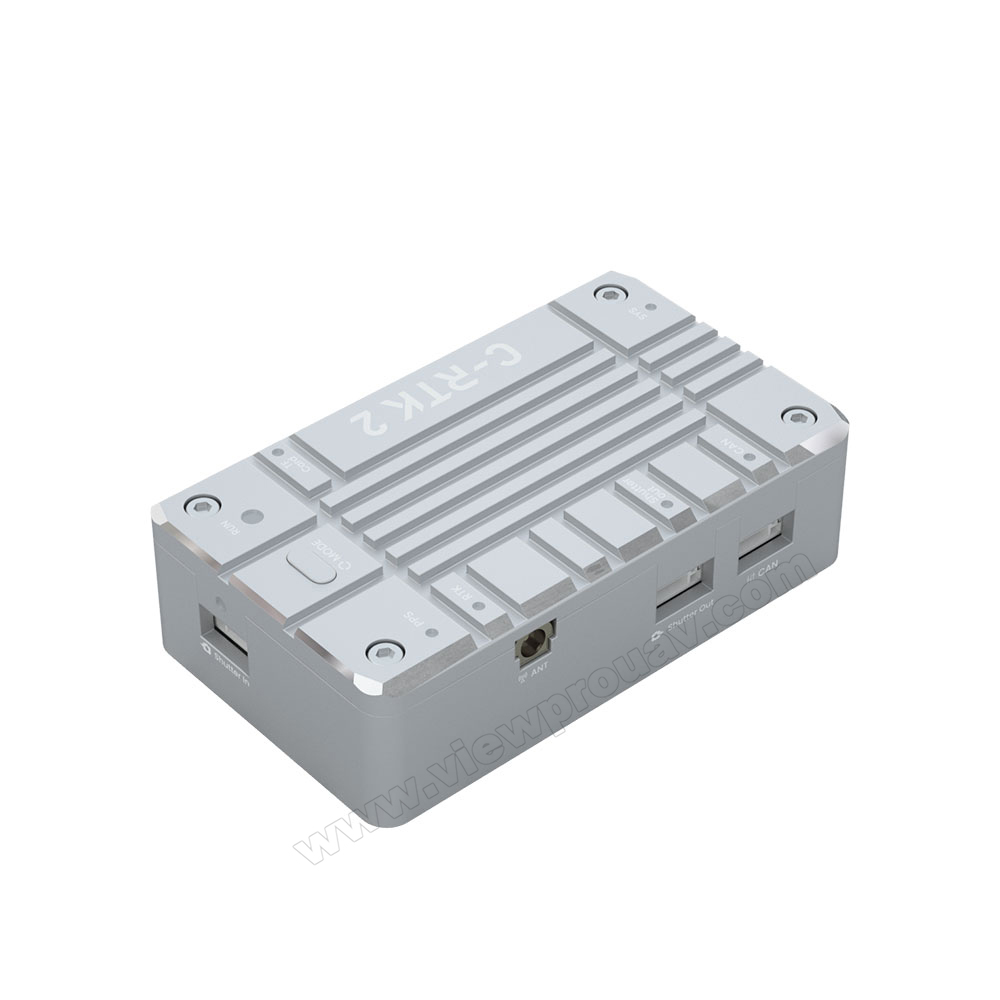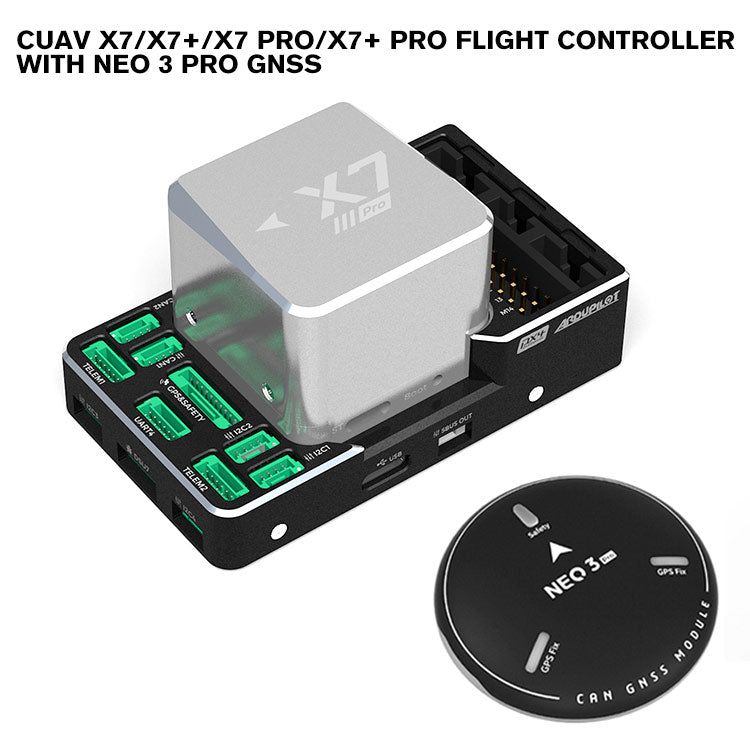SparkNavi Drone Flight Controller and GNSS/INS Made in Taiwan: Blazing A Trail in Drone Modern Technology
SparkNavi Drone Flight Controller and GNSS/INS Made in Taiwan: Blazing A Trail in Drone Modern Technology
Blog Article
Discovering the Duty of Drone Flight Controllers in Enhancing Trip Stability and Navigating Effectiveness
The advancement of drone technology has considerably raised the value of flight controllers, which work as the brain of these airborne vehicles. By integrating real-time information from a range of sensors, trip controllers enhance trip stability and navigating effectiveness, guaranteeing that drones can run smoothly even in complex environments. This discussion will discover the crucial elements that contribute to these enhancements, in addition to the implications for the future of self-governing trip. What developments exist in advance that could additionally change the capabilities of drone flight controllers?

Understanding Trip Controllers
Flight controllers are important parts in the functioning of drones, functioning as the minds that stabilize and handle flight operations. These sophisticated devices procedure data from numerous sensors, including accelerometers, gyroscopes, and GPS, to make sure that the drone keeps its designated trip course. The flight controller translates this data and executes commands based upon pre-defined algorithms, allowing the drone to reply to ecological modifications, such as wind or barriers.
The main feature of a flight controller is to keep security during trip. It attains this by making real-time modifications to the drone's motors and control surfaces, making sure equilibrium and control. Furthermore, modern trip controllers incorporate innovative features such as waypoint navigating, enabling automated trip paths and enhanced operational effectiveness.
Comprehending the architecture of flight controllers is important for both enthusiasts and professionals. They usually contain a microcontroller, firmware, and numerous interfaces for sensing unit input and communication. As modern technology advancements, flight controllers have become extra compact and capable, integrating fabricated intelligence to adjust and boost decision-making processes to intricate flight situations. This evolution represents an essential growth in the drone market, paving the method for more sophisticated applications and much safer procedures.
Secret Elements of Trip Security
Accomplishing optimum flight stability in drones counts on several vital parts that operate in performance to make sure smooth and regulated procedures. Central to this security is the flight controller itself, which processes data from different sensing units to preserve the preferred trip attitude. This consists of accelerometers and gyroscopes that gauge motion and positioning, permitting real-time changes to the drone's position.
One more vital component is the digital speed controllers (ESCs), which control the power supplied to the electric motors. By carefully adjusting electric motor speeds in feedback to trip controller commands, ESCs help preserve balance and neutralize disruptions triggered by wind or unexpected activities.
Additionally, the design of the drone's structure plays a crucial function in flight security. A well-structured frame reduces vibrations and enhances the overall wind resistant profile, adding to smoother trip qualities. The integration of sophisticated algorithms within the flight controller help in predictive adjustments, making certain a receptive and adaptable flight experience.
Together, these components create a natural system that enhances a drone's stability, permitting specific maneuvering and improved efficiency in different flight conditions.
Navigation Performance Strategies
Performance in navigating is vital for maximizing drone operations, especially in complex atmospheres. Efficient navigating methods improve the capacity of drones to pass through tough surfaces and stay clear of obstacles, thereby boosting operational efficiency and safety.
One prominent technique is the implementation of sophisticated general practitioners and inertial measurement devices (IMUs) that give accurate area monitoring and positioning information. These technologies allow drones to compute optimal trip courses in real-time, taking into account different factors such as wind problems and prospective obstacles.
One more method includes the use of formulas for path planning and optimization. Algorithms such as A * and Dijkstra's algorithm can be released to identify one of the most reliable route while lessening power intake and trip time. Integrating machine discovering versions can allow recommended you read drones to adaptively discover from their settings, improving navigation capacities through experience.

Effect On Autonomous Drones
The integration of sophisticated navigation techniques has actually greatly transformed the abilities of self-governing drones, enabling them to operate with higher autonomy and precision. SparkNavi drone flight controller and GNSS/INS made in taiwan. These enhancements are mostly associated to innovative trip controllers that utilize real-time information handling and sensing unit fusion, enabling drones to browse complex atmospheres effortlessly
The effect on independent drones extends past simple navigation; it encompasses improved obstacle evasion, enhanced stability during dynamic problems, and boosted objective integrity. By leveraging formulas that incorporate machine learning and fabricated knowledge, drones can adapt to altering situations, making educated choices that enhance their flight courses while reducing risks.
Furthermore, the execution of robust flight controllers has actually helped with the implementation of intricate jobs, such as aerial inspections, shipment services, and farming surveillance, with minimal human treatment. This capacity not just enhances operations but also lowers human error, thus enhancing overall safety and security.
Consequently, the functional range of self-governing drones has broadened dramatically, making them vital tools in numerous markets. Their capability to do effectively in diverse circumstances underscores the discover this info here crucial function that progressed flight controllers play in shaping the future of unmanned aerial systems.
Future Patterns in Flight Control
Frequently, improvements in flight control innovation are positioned to redefine the landscape of drone procedures in the coming years. Arising trends suggest a substantial change towards improved expert system (AI) assimilation, enabling flight controllers to refine real-time information a lot more successfully. This evolution will certainly assist in improved decision-making capabilities, permitting drones to adjust to vibrant ecological problems autonomously.
Furthermore, the implementation of artificial intelligence algorithms is expected to boost anticipating upkeep, therefore minimizing downtime and expanding the lifecycle of drone parts. This positive method to upkeep will be crucial as drone applications increase across different sectors, from agriculture to logistics.

.jpg)
Finally, improvements in safe and secure interaction procedures will certainly attend to security and regulatory issues, guaranteeing that drones can operate effortlessly in busy airspaces (SparkNavi drone flight controller and GNSS/INS made in taiwan). Jointly, these trends point towards a future where flight control systems are not just smarter and extra efficient yet likewise capable of running safely in a progressively integrated airspace
Verdict
In final thought, drone trip controllers are indispensable to enhancing flight security and navigation efficiency with the innovative processing of sensor data. By keeping optimal trip attitudes and employing advanced formulas for course optimization and barrier evasion, these controllers considerably add to the autonomy and operational safety of drones. As technology continues to evolve, additionally developments in flight control systems are expected, assuring enhanced efficiency and broadened capabilities in the realm of unmanned aerial cars.
By incorporating real-time data from a selection of sensing units, trip controllers enhance flight security and navigating effectiveness, guaranteeing that drones can operate smoothly also in complex atmospheres.Flight controllers are essential elements in the functioning of drones, serving as the brains that support and manage trip operations. In addition, modern flight controllers incorporate innovative features such as waypoint navigation, permitting for automated flight courses and boosted operational efficiency.
Central to this security is the flight controller itself, which refines data from numerous sensors to maintain the preferred flight perspective.In final thought, drone flight controllers are important to improving flight stability and navigating efficiency through the innovative handling of sensor information.
Report this page